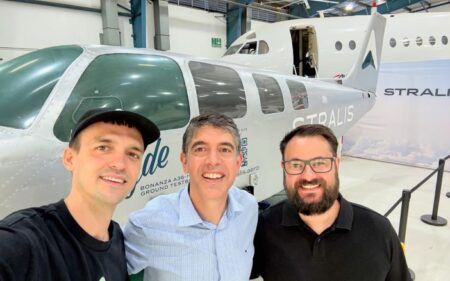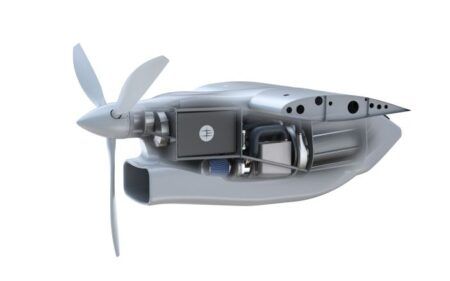Wisk Aero has revealed an updated prototype of the autonomous all-electric eVTOL aircraft it is developing.
The sixth version of the self-flying, four-passenger air taxi is also the version Wisk intends to put forward for type certification by US aviation regulator the FAA. When it does so, it will be the first time an autonomous eVTOL aircraft has been put forward for type certification.
As well as type certification, Wisk will need to obtain production certification before it can start manufacturing the aircraft. The company is not disclosing timelines but said at the beginning of this year it aims to be operating the largest fleet of eVTOL aircraft in the world five years after certification It also recently published a concept of operations that foresees autonomous aircraft in the skies by 2030.
According to Wisk Generation 6 of its eVTOL aircraft has a simplified and redundant design and provides autonomous flight with human oversight.
The aircraft uses technology that accounts for more than 93% of automated pilot functions on today’s commercial flights as well as improved detect and avoid capabilities, sensors, and decision-making software.
Wisk has been developing eVTOL aircraft since 2010. Gary Gysin, CEO of Wisk said, “Our 6th Generation aircraft is the culmination of years of hard work from our industry-leading team, learnings from our previous generations of aircraft, commitment from our investors, and the evolution and advancement of technology.”
Wisk is backed by Boeing and Kitty Hawk and is being supported by Boeing in aircraft development, scale manufacturing, certification and autonomous systems engineering.
The 6th Generation electric aircraft has a cruising speed of 138mph (222km/h) a range of 90 miles (144km) with reserves and is designed to fly at an altitude of between 2,500 – 4,000 ft. It has a 50ft wingspan and features a proprietary 12 propeller design and boom configuration with improved propulsion systems.
Tilting propulsion units in front of the wing and fixed lift units aft of the wing are optimized for range, improved aircraft control and performance, and efficient energy management. A raised wing design, extended booms, and increased size and number of propeller blades improve safety, stability, and the passenger experience, while reducing in-cabin noise and the aircraft’s overall noise footprint.
Wisk is targeting an operating cost of $3 per passenger, per mile. in addition the aircraft includes an entry and exit designed for individuals across the mobility spectrum, and user interfaces that accommodate people living with hearing, vision, and other impairments.
Since 2010, the company has completed over 1600 test flights using five different generations of prototype eVTOL aircraft. In 2014, Wisk became one of the first companies to complete a full transition of vertical takeoff to wingborne flight.




